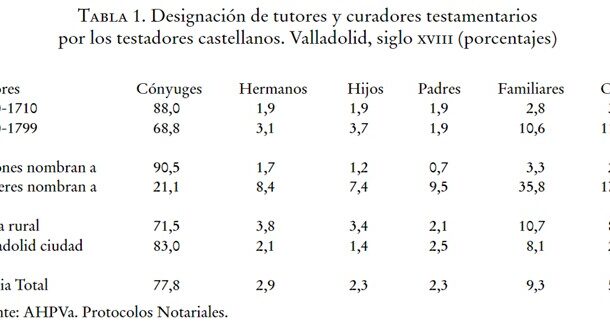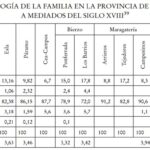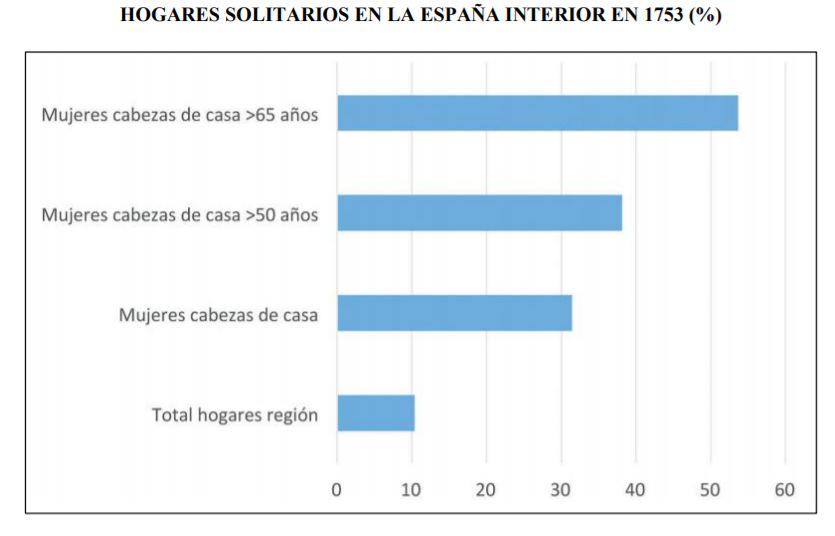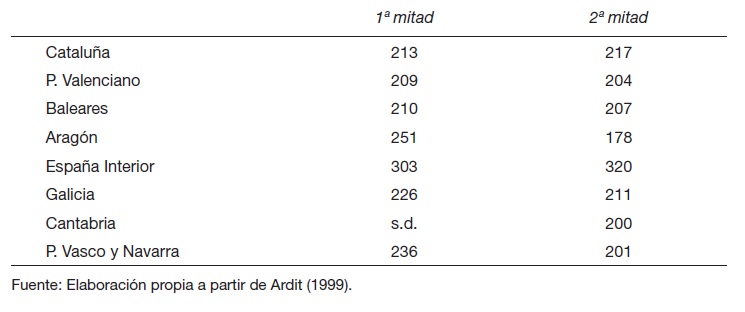
The author gives us the structure of the family in the province of León according to the Catastro de la Ensenada (1752-1754). By areas, the rural world, represented by the counties linked to agrarian models, the nuclear family was hegemonic, with values far higher than in the urban world. These values are attenuated in mountain areas for the nuclear model, in contrast with the growth of the solitary household, reaching levels of 22.7%. In the rest of the province, the number of single people was between 15% and 13%, with Cea-Campos standing out for its low number of single people: 6.7%. The extended household, made up of direct family additions to the nuclear household, was the third most widespread typology, but with more modest values. It stood out in the counties and villages with the lowest percentage of nuclear families; similarly, the multiple household, almost absent, had a greater impact in mountainous areas: Ancares (3.3%) and Montaña (6.4%), and was the protagonist of the rural elites as a compensatory family strategy in the distribution of inheritance.
Collection: Statistics
Project: 3. Rural world and urban world in the formation of the European identity., 4. Family, daily life and social inequality in Europe.
Chronology: XVIII
Scope: Secondary Education, Baccalaureate, University
Link: https://revistas.usal.es/index.php/Studia_Historica/article/view/shhmo201436177222/12700
Resource type: Statistics
Format: Table
Source: Pérez Álvarez, M. J. y Rubio Pérez, L. M. (2014). "Familia y comunidad rural. Modelos agrarios, colectivismo social y comportamientos familiares en la provincia de León durante la Edad Moderna", en Studia Historica, vol. 36, p. 195.
Language: Spanish
Date: 2014
Owner: Pablo Ballesta Fernández (Modernalia)
Copyright: ©Studia Historica ©María José Pérez Álvarez ©Laureano Rubio Pérez
Abstract: Table analysing the different family models in the province of León in the mid-18th century according to factors related to the geographical environment and the socio-economic structure
Image
Tags








